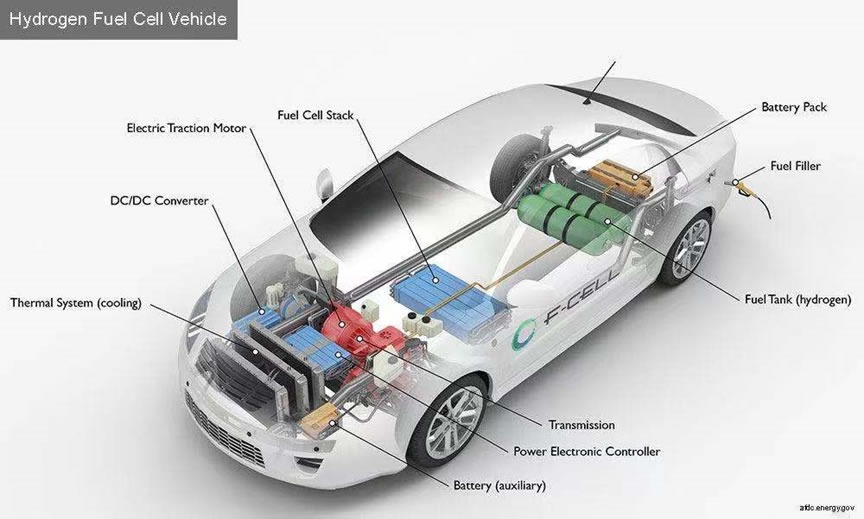-
Call Us On:
+86-577-61675999
+86-15355776033 -
Send us a Mail:
- Get a Quote
+86-577-61675999
+86-15355776033

Battery (auxiliary): In an electric drive vehicle, the auxiliary battery provides electricity to start the car before the traction battery is engaged and also powers vehicle accessories.
Battery pack: This battery stores energy generated from regenerative braking and provides supplemental power to the electric traction motor.
DC/DC converter: This device converts higher-voltage DC power from the traction battery pack to the lower-voltage DC power needed to run vehicle accessories and recharge the auxiliary battery.
Electric traction motor (FCEV): Using power from the fuel cell and the traction battery pack, this motor drives the vehicle's wheels. Some vehicles use motor generators that perform both the drive and regeneration functions.
Fuel cell stack: An assembly of individual membrane electrodes that use hydrogen and oxygen to produce electricity.
Fuel filler: A nozzle from a fuel dispenser attaches to the receptacle on the vehicle to fill the tank.
Fuel tank (hydrogen): Stores hydrogen gas onboard the vehicle until it's needed by the fuel cell.
Power electronics controller (FCEV): This unit manages the flow of electrical energy delivered by the fuel cell and the traction battery, controlling the speed of the electric traction motor and the torque it produces.
Thermal system (cooling) - (FCEV): This system maintains a proper operating temperature range of the fuel cell, electric motor, power electronics, and other components.
Transmission (electric): The transmission transfers mechanical power from the electric traction motor to drive the wheels.

For more information